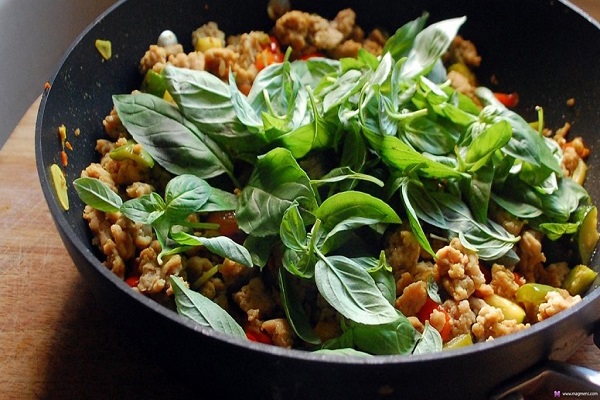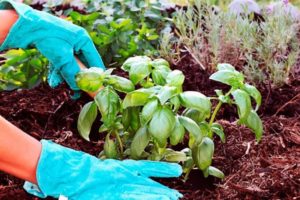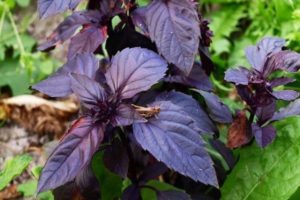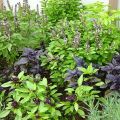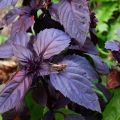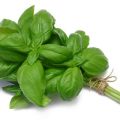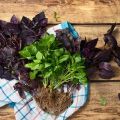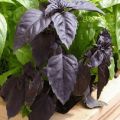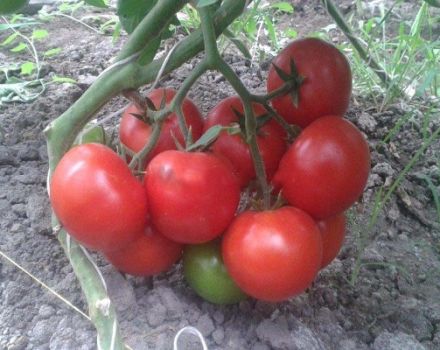Useful properties and contraindications of basil for the human body
Basil, the beneficial properties and contraindications of which are already well studied, is actively used not only for culinary, but also for medicinal purposes. The beneficial effect of this aromatic spice on the human body has long been proven. The rich and extensive chemical composition of this culture allows it to be used in various fields.
Royal herb basil
The name of the fragrant spice is translated from Greek as "royal". Since ancient times, the basil has a dominant position in the world of spices and was considered the royal herb. The culture is especially widely used in the cuisine of Mediterranean countries, where it is indispensable as a spice in various salads, soups and main courses. A unique and sophisticated taste of the dishes is given by notes of soft spicy cloves, a subtle aroma of white allspice and a tart aftertaste of lime.
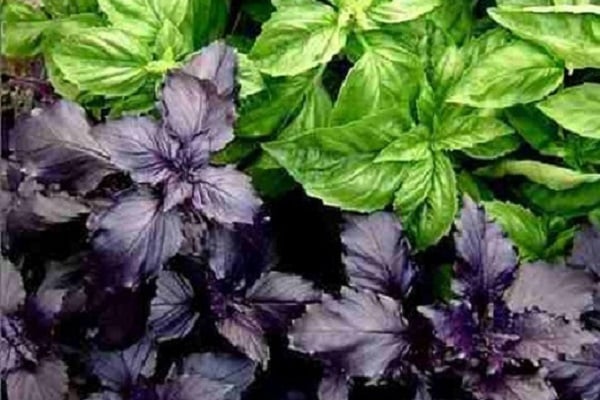
Basil is also actively used in India, Iran and Pakistan, the benefits and harms of this herb were described in ancient times by many healers and healers. In nature, you can find more than 50 varieties of this culture, which differ in appearance and have a different original taste (bitter-peppery, aniseed, lemon, clove-mint and others).
Despite the taste and visual differences, the beneficial properties of basil of different varieties are almost the same. On the territory of Russia, spicy grass of purple and green shades is most often cultivated.
Composition and calorie content of fresh and dried basil
Basil herb has an extremely rich chemical composition. Its foliage contains a large amount of essential oils (up to 1.5%), which give the spice its unique taste and piquant aroma.
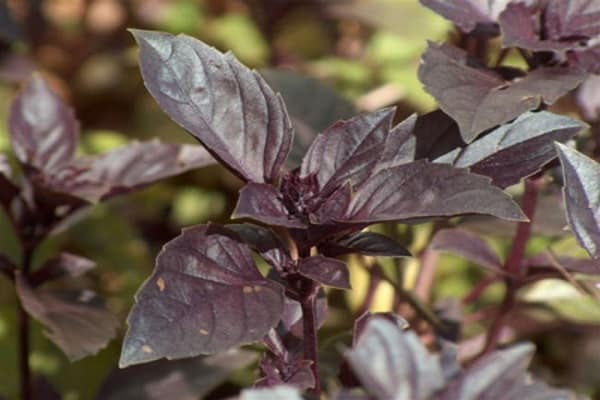
The following vitamins are found in dried and fresh herbs of this fragrant plant:
- group B (choline, thiamine, pyridoxine, niacin, folic and pantothenic acids);
- E (tocopherol acetate);
- C (ascorbic acid);
- A (beta-carotene);
- K (phylloquinone);
- PP (nicotinic acid);
- carotene (provitamin A).
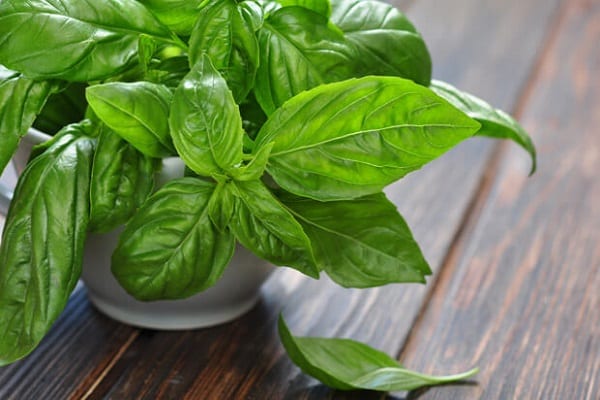
Basil is high in iron, copper, magnesium, manganese, calcium, potassium and phosphorus. Sodium, selenium, mercury and zinc are present in smaller amounts. In addition to essential oil, the herb contains various tannins, phytoncides, camphor, rutin, simple sugars, etc. This fragrant spice can be consumed both fresh and dried. The benefits are almost the same.
The calorie content of fresh green mass does not exceed 23 kcal per 100 g of grass, and for dried basil the energy value is about 251 kcal. Not only green mass (fresh and dried) finds application, but basil seeds are actively used (for weight loss, treatment of skin diseases, hair improvement).

The benefits of basil for the human body
Basil is beneficial for human health due to the following qualities:
- has a strong tonic effect;
- enhances immunity;
- strengthens vascular walls, improves blood clotting;
- improves visual acuity and helps to slow down age-related changes in the retina;
- has a beneficial effect on the condition of hair, nails and skin;
- normalizes blood pressure;
- removes toxins and harmful substances (cholesterol, free radicals and others);
- has an antibacterial effect, protects against viral, fungal and bacterial infections;
- has antipyretic and diaphoretic effects, eliminates inflammation (with bronchitis, colds, sore throat);
- has a pronounced antiseptic effect and wound healing effect;
- strengthens the nervous system, relieves stress, improves mood;
- improves digestion and promotes better absorption of nutrients;
- reduces gas formation in the intestines;
- has an analgesic effect (for toothache, migraines, menstrual cramps);
- thanks to antioxidants, it prevents the occurrence of malignant neoplasms;
- normalizes the activity of the cardiovascular system;
- has a mild diuretic effect.
On the basis of the ground green part of the plant and seeds, various home remedies are prepared: drinks, tinctures, oils, decoctions.
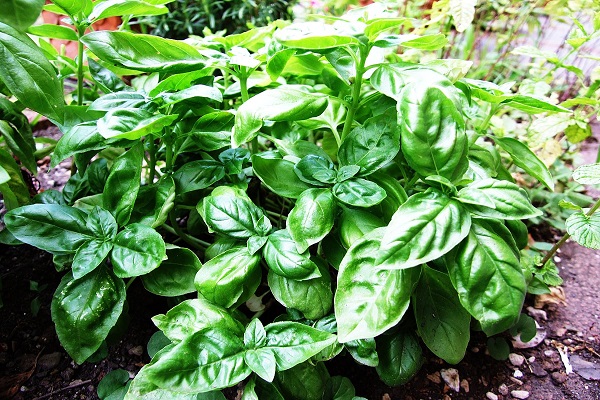
Basil juice
Freshly squeezed basil juice has tonic, antispasmodic, anti-inflammatory and analgesic effects. Compresses and lotions from freshly prepared green mass help with long-healing wounds, burns, purulent lesions and skin pathologies. A few teaspoons of the juice, diluted with hot milk, are taken orally for angina, loss of appetite, fever, insomnia and nervous disorders.
These drinks improve mood, relieve depression and calm the nerves. Scientifically proven to be beneficial for men, as the fresh spice helps to increase blood circulation. The beneficial effect on the male body is manifested in an increase in potency.
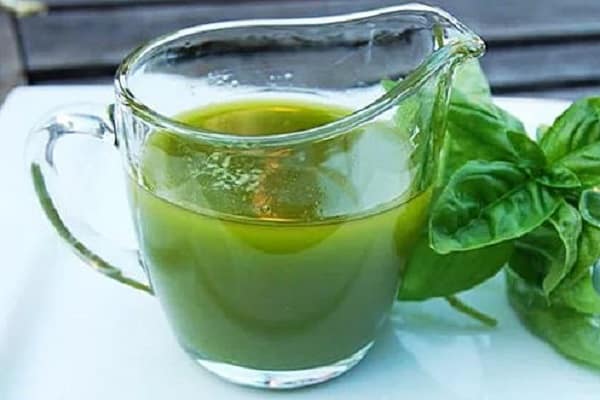
Basil alcoholic tincture
Products based on alcohol and dried or fresh plant leaves are widely used. Various alcohol and vodka tinctures are used for migraines, colitis, gastritis, pyelitis, tuberculosis and whooping cough. However, the medicinal properties of basil can sometimes have the opposite effect. In diseases of the cardiovascular system, alcohol preparations from basil are highly discouraged.
To prepare the tincture, you need to take 50-60 fresh green leaves of this fragrant herb, pour them ½ cup of alcohol or vodka, tightly close with a cork or lid, then leave for 10-14 days in a cool and dark place.
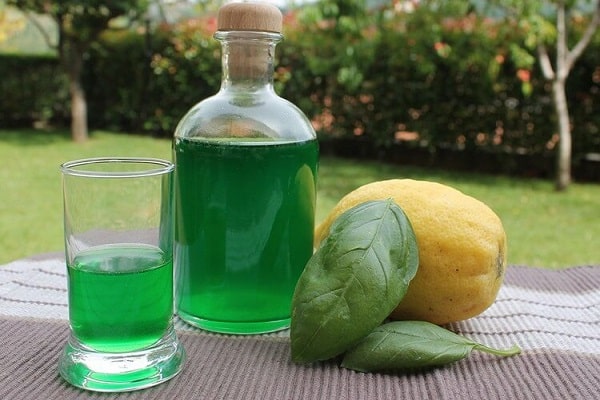
Basil tea
The benefits of basil for the human body with regular use have been noticed for a long time. For this, tea made from dried spice leaves is best suited. The drink relieves anxiety, depression and blues, normalizes night sleep, helps to quickly restore strength in case of exhaustion and physical exertion. The broth has a pronounced soothing effect.
Basil tea strengthens the body, raises immunity. It is recommended for hypotension, as it gently increases blood pressure. Cold broth perfectly quenches thirst on a hot summer day, lemon basil is especially good in this regard, which has an original cooling flavor.
Making tea does not take much time and effort.To do this, take dried basil greens (1 tsp without top), pour 200 ml of boiling water, cover with a lid or saucer, then leave for about 30 minutes. Apply orally twice a day, ½ cup.
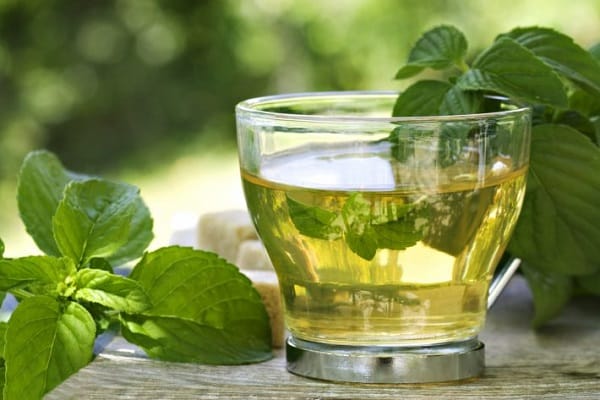
Application in traditional medicine
Basil is widely used in quackery and folk medicine. It is used to make preparations in the form of decoctions, tinctures, medicinal balms and oils. Various means based on it are used in the following situations:
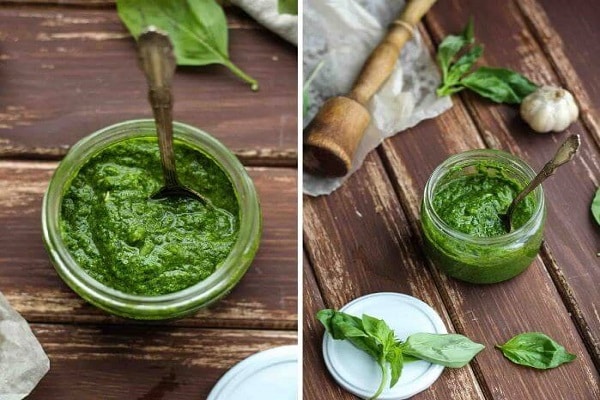
- an infusion on dried leaves with the addition of a small amount of black sesame seeds is effective for the first symptoms of a cold and viral infections;
- sour milk or sour milk with crushed dried spice powder is given to expectant mothers with difficult and problematic childbirth, the drink gives strength and helps to accelerate the appearance of breast milk;
- gruel from grated fresh basil herb is applied in the form of compresses to corns and wounds, lubricating the resulting mass of whiskey or the back of the head, get rid of headaches;
- to improve the condition of the skin, lotions with basil are recommended;
- for a mild reduction of high blood pressure, take the remedy from the dried ground part of the plant, filled with boiling water;
- essential oils of basil are inhaled with a cold, they reduce the swelling of the nasal mucosa;
- poultices and compresses are prepared from green leaves, which relieve back and joint pain;
- a decoction of dry and fresh leaves is used to treat diseases of the oral cavity (periodontitis, gingivitis, various wounds and ulcers), they relieve sore throat and treat inflammation;
- freshly squeezed juice is used to treat the skin for fungal infections.
All parts of the spice crop can be used, not just the green leaves. The root of the plant is effective for intestinal infections and digestive disorders, tea from the flowers is useful as a sedative and tonic.

Spicy herb in cooking
The original spice basil, whose beneficial properties for men and women have been studied since ancient times, is widely used in various national cuisines. It is eaten both fresh and dried. The aromatic herb is a common food additive to hot meat and fish dishes, various salads, sauces, and sometimes even to drinks (liqueurs, balms, lemonade). Lemon basil indispensable in the composition of tonic green tea.
The area of use of the seasoning is extremely wide, it is added to soups, pizza, pasta, desserts and pastries. Greens are used for pickling tomatoes and cucumbers, pickling mushrooms, in salads of eggplant and zucchini, as well as for pickling cabbage. Dried herb is added to sausages, sandwich oils, pates, flavored vinegar. A sauce based on olive oil, basil and garlic plants is a classic in French cuisine. The spice is used as an independent seasoning and as part of various spice mixtures.

Folk recipes for medical use
There are a lot of recipes for using basil for medical and medicinal purposes. Most often, it is recommended to use medicines based on it as follows:
- decoction of the dried ground part of the plant is advised to gargle with tonsillitis and sore throat twice a day;
- to relieve a toothache, add 1 tsp to the broth. table salt and vinegar and rinse with a warm solution, briefly retaining the liquid in the mouth;
- basil with rosemary and sage is poured with boiling water and insisted, tightly closed with a lid, then filtered and drunk 1 glass a day (with sexual weakness);
- finely chopped fresh stems are poured with dry wine and infused for 20 days, taken 30 ml three times a day after meals (increases potency);
- tea from 1 tbsp. l.dried herbs and 1 cup boiling water (leave for 10 minutes) helps to get rid of menstrual pain on critical days, stress and neurosis;
- the same broth is useful to drink as a tea drink and a tonic, adding lemon, sugar or honey to it;
- a strong decoction of green mass (cook for 5 minutes) promotes the fastest healing of scratches, cracks and small wounds on the skin;
- wash the eyes with a decoction of basil to relieve inflammation, tension and fatigue (we make an infusion of 30 g of chopped herbs and 0.5 liters of boiling water);
- powder from dried leaves of this spice is used for a cold (as a sneezing agent);
- the herb powder will have a wound healing and anti-inflammatory effect when added to ointments and creams for the treatment of eczema and trophic ulcers;
- freshly squeezed juice is used to treat skin lesions (ulcers, wounds, eczema), and the liquid is instilled into the ears for otitis media;
- for weight loss, it is recommended to eat 1 tsp daily. basil seeds in the morning on an empty stomach with plenty of warm liquid.
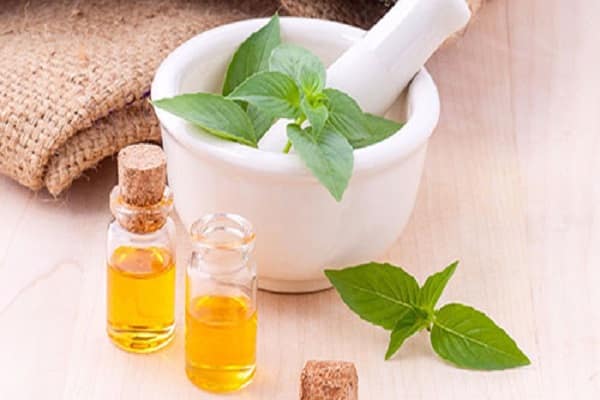
Basil contraindications: harm to spices
Abuse of basil-based drugs can be dangerous and harmful, even if there are no direct contraindications. In this variant, the human body sometimes reacts with severe food poisoning and upset. The harm caused by basil will be stronger than all its positive qualities.
You cannot use this spicy spice in the following situations:

- thrombosis and thrombophlebitis, a tendency to varicose veins;
- poor blood clotting;
- vegetative dystonia and hypotension,
- recent myocardial infarction;
- diabetes;
- epileptic seizures;
- inflammatory processes in the brain;
- stroke;
- exacerbation of gastrointestinal diseases;
- cardiac ischemia;
- individual intolerance;
- age up to 7 years.
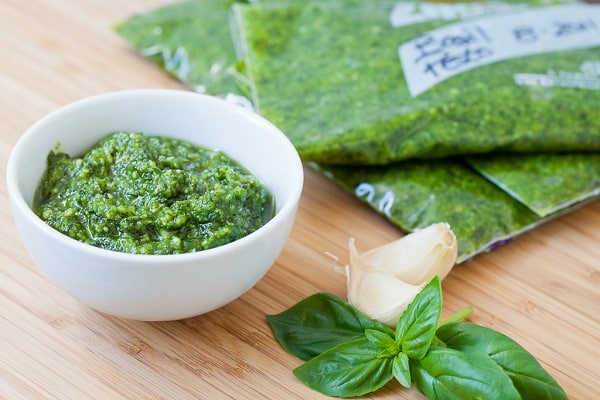
Care should be taken to use the spice for pregnant women and during breastfeeding, since essential oils contained in large quantities can have a negative effect on the fetus and the expectant mother.
The chemical composition of this plant includes mercury, it gives the grass bactericidal properties and enhances the body's defenses. But excessive use and exceeding the daily dosage several times harms health. Therefore, for medicinal purposes, basil is not used for more than 20 days; after a short break, the course can be resumed. Before using a fragrant herb as a healing agent, you should consult your doctor.
